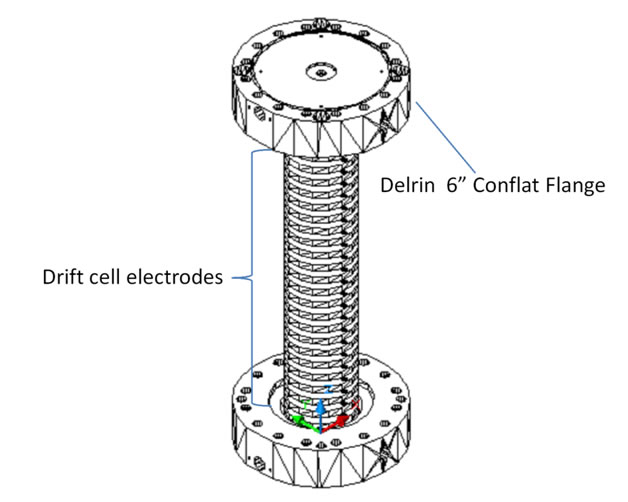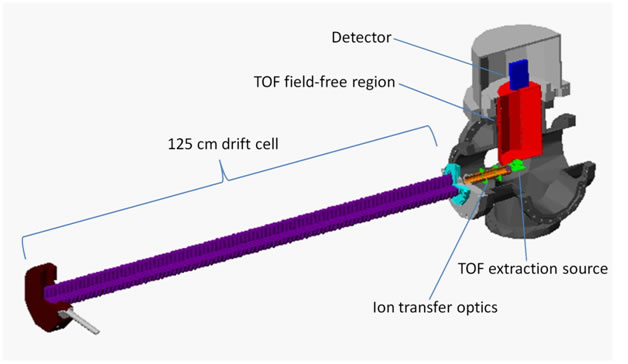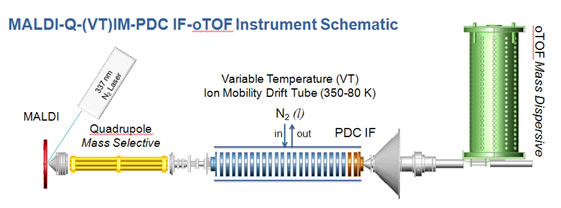

|
Our laboratory has been investigating the effect of increased-drift length on mobility resolution. Specifically, we have utilized periodic-focusing DC ion guide drift cells to increase ion transmission over increased-drift lengths with minimal loss in mobility resolution with respect to conventional uniform field drift tube IMS. The figure above shows one of the PDC IG drift cells, drift length 125 cm, coupled with a short, 22.8 cm, linear TOF mass analyzer. The IM-MS instrument has provided mobility resolution of 80-90 for m/z range 720-1296 and a resolution above 100 for m/z 2465.
The 125 cm drift cell is constructed in a stacked electrode design where each electrode is stacked on top of the preceding electrode with precision ceramic ball spacers. The entire electrode stack is then compressed for alignment and structural stability. The construction and cleaning of such a design is difficult. For this reason, our laboratory designed a modular drift cell utilizing smaller sections of the stacked electrode design. This design allows for each section to serve as an individual drift cell or a collection of modules coupled together to form a longer drift cell. The design utilizes 6” Conflat® flanges allowing for easy variation of drift length as well as facile coupling to a variety of commercial mass spectrometers. The modular design is shown below illustrating the stacked electrodes and flange design. An alumina tube surrounding the electrodes to establish vacuum and the precision ceramic ball spacers are omitted. |
In the past few decades, IM-MS has evolved into a diverse research tool which has been used in a wide range of post-ionization separations. Owing to the versatility of the IM-MS technique, the study of novel instrument design platforms and applications is one of the most rapidly growing areas in the field of mass spectrometry. Our research focuses on improving the analytical figures of merit for IM-MS in terms of sensitivity and resolution. Specifically, we are concerned with exploring the theory and function of the periodic-focusing DC ion guide (PDC IG) and the periodic-focusing DC ion funnel (PDC IF)—both of which provide a novel means for achieving high resolution IMS separations with high sensitivity. Additionally,we are interested in cryogenic-temperature IMS separations which not only increase IMS sensitivity and resolution, but also provide the ability to freeze out inter-converting molecular structures and/or induce thermodynamically driven conformational changes in proteins
and peptides. |


|
Publications on Instrumentation
“Increased Ion Transmission in IMS: A High Resolution, Periodic-Focusing DC Ion Guide Ion Mobility Spectrometer”
Ryan C. Blase, Joshua A. Silveira, Chaminda M. Gamage, and David H. Russell
submitted to the International Journal of Mass Spectrometry
“Gas-phase Ion Dynamics in a Periodic-focusing DC Ion Guide”
Joshua A. Silveira, Chaminda M. Gamage, Ryan C. Blase and David H. Russell
submitted to the International Journal of Mass Spectrometry

|
 LABORATORY FOR BIOLOGICAL
LABORATORY FOR BIOLOGICAL 



